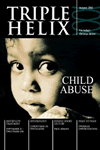Draft guidance from NICE (National Institute of Clinical Excellence), Fertility: assessment and treatment for people with fertility problems,[1] has identified a number of issues as priorities for infertility treatment provision on the NHS. Among them is the recommendation that up to three complete treatment cycles should be freely available to any woman who meets the treatment criteria. These criteria include the upper age restriction of 39 and a clearly diagnosed cause of infertility - or unexplained infertility of 3 years' duration
The media have been quick to jump on the impending costs to the NHS should such a policy be implemented. Each fresh cycle of IVF costs approximately £3,000, and there have been estimates that the annual bill for free treatment could reach £400million - 0.6% of the £64,400million annual NHS expenditure for 2001/2.
The intention of NICE is an apparently worthy one: to eliminate the 'post-code lottery' that currently exists for infertility treatment provision. Health authorities currently decide at the local level the provision they will make for NHS infertility services. Most authorities adopt a policy statement to standardise this across their area. In the 1997/8 financial year [2] expenditure varied from below £100,000 to above £400,000, and some authorities did not fund any infertility treatments at all. A few provide treatment for women over 40. Some authorities already fund three treatment cycles, whilst others provide only one. This leaves some couples selling their homes, or accumulating thousands of pounds in debt to achieve the dream of bearing their own child, while for others it is free.
A worthy cause perhaps, but there will be a price to pay - it seems unlikely that provision will be possible without cuts elsewhere. Infertility is a cause of great distress to many couples, but still we may wonder at the priorities of a society that regards infertility treatments as so important that they should be provided through the funding of the welfare system at such cost. Cost, not only to the taxpayer who may not agree with the policy, but also to those who will experience the brunt of the cuts - or continuing lack of resources - elsewhere.
Two key examples of areas that could benefit from resources are the prevention of infertility and promotion of adoption. Much infertility is preventable - occurring either as a consequence of sexually transmitted disease and abortion or resulting from postponing childbearing until later years. Those who would consider adoption can find the adoption process difficult to access, and the number of baby adoptions has fallen from near 15,000 a year in the 1960s to just 239 in 2002. Rising infertility rates and falling adoption rates, teamed with increased promotion of infertility treatments will likely fuel the attitude that people have a right to bear their 'own' child - at their time of choice. It would seem wiser for the government to address the deeper issues at a national level rather than channelling more public money into a procedure with a 75% failure rate.
































